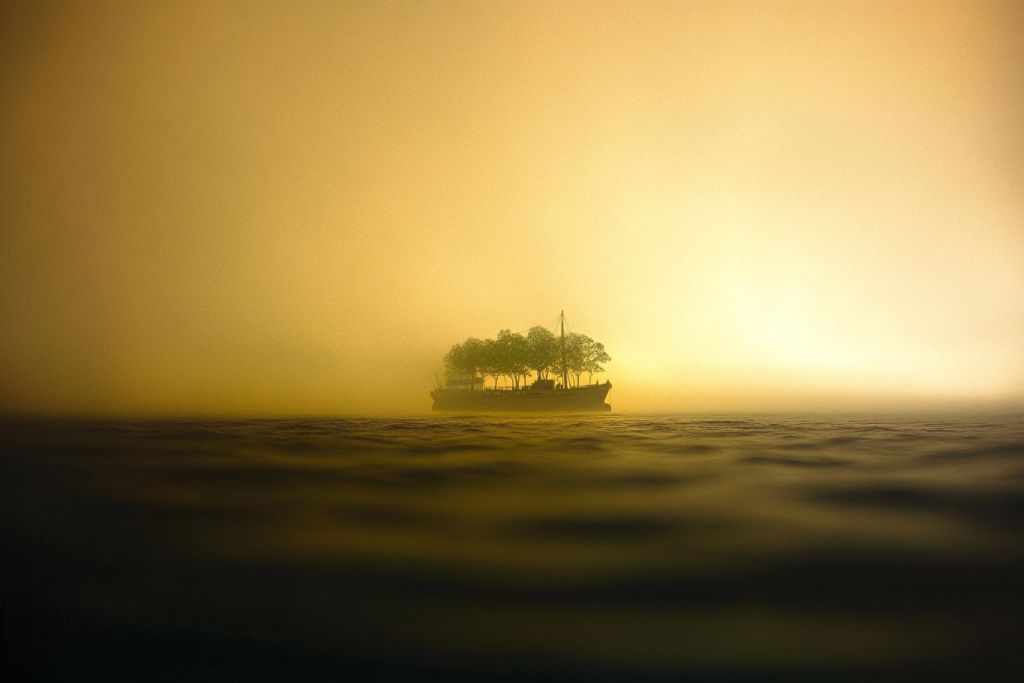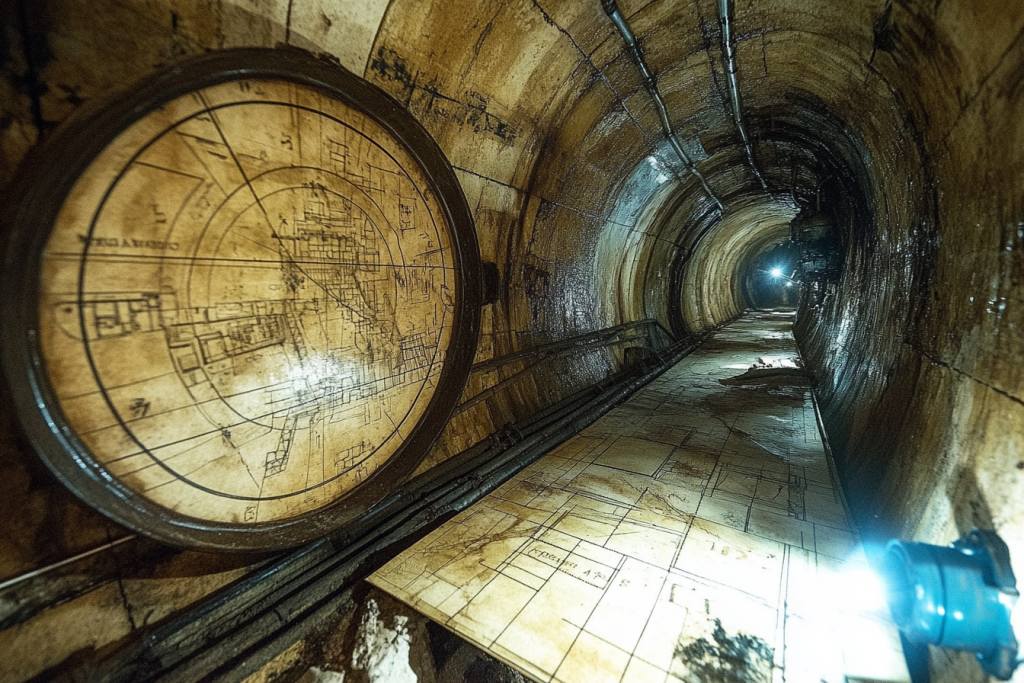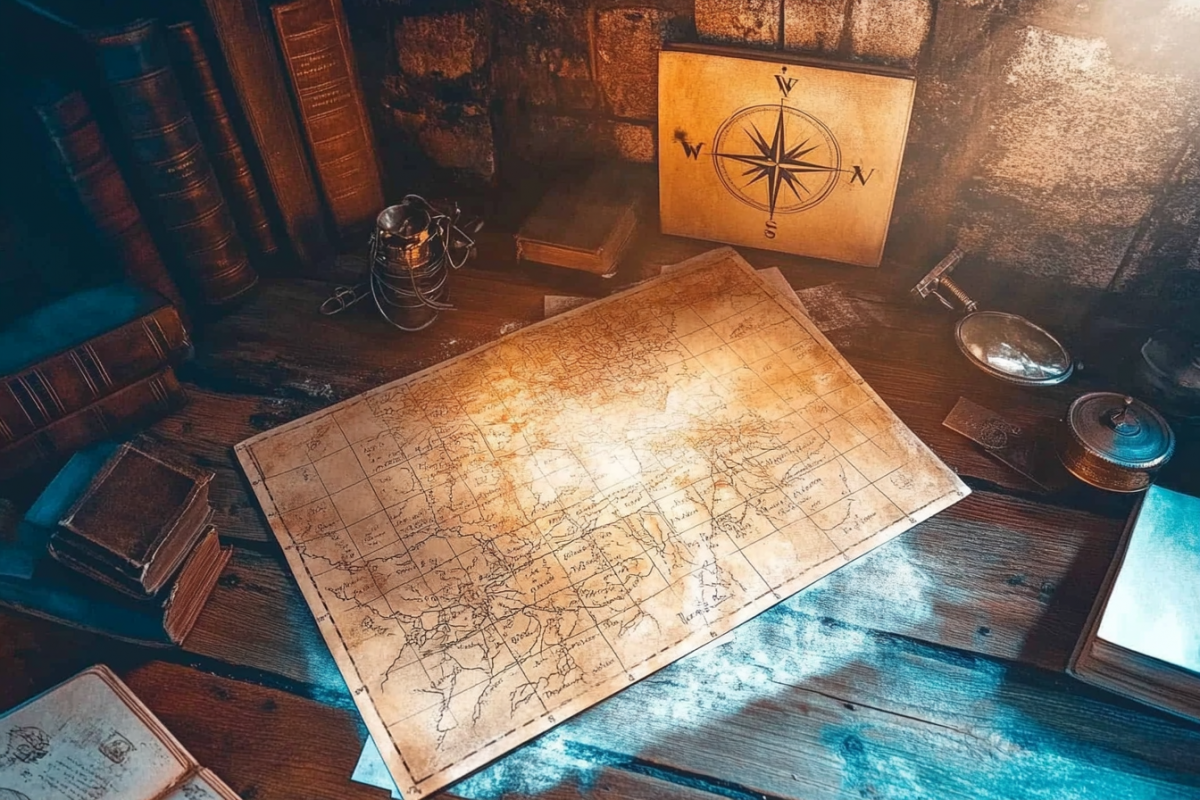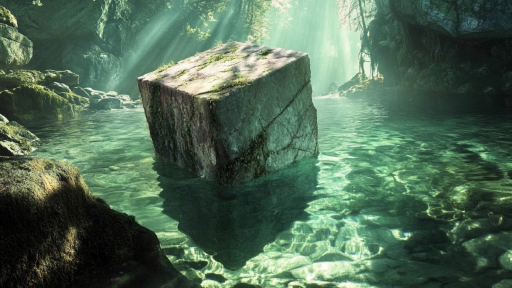
Maps are meant to guide us, to reveal the shape of the world, but what happens when they point to places that no one can find? Over centuries, explorers, historians, and treasure hunters have stumbled upon cryptic maps that defy explanation—locations that don’t match reality, coastlines that shift, and lands that seem to vanish entirely. Some say these maps are mistakes, while others believe they hint at hidden truths, lost civilizations, or forgotten knowledge. What secrets do these strange maps hold, and why do they lead to places that seem to exist… and yet don’t?
The Island That Vanished from Every Map

Sailors for generations claimed to have seen a lush, tropical island deep in the Pacific, appearing on maps as late as the 20th century. Then, it was erased. Expeditions sent to find it came back empty-handed, reporting nothing but open ocean where land was supposed to be. Was it a cartographic error, or did something sink beneath the waves, leaving only whispers on old maps?
The Map of Agartha: A Passage to the Hollow Earth

Ancient legends speak of Agartha, a hidden world inside the Earth, accessible through secret tunnels marked on an old, cryptic map. The entrances are said to be in remote mountain ranges, but no expedition has ever proven their existence. Strangely, some explorers have reported finding inexplicable underground passages where no tunnel should be. Could the map be pointing to something real, or is it just a myth passed through time?
The Phantom Settlement on the Explorer’s Chart

A 17th-century explorer documented a thriving village deep in an uncharted forest, marking its location on a beautifully detailed map. Later expeditions found no trace of it—no ruins, no remains, as if no one had ever lived there. The map still exists, its accuracy undeniable, but the settlement itself has become a ghost. Did it ever exist, or was it wiped from history in a way no one can explain?
The Arctic Land That Shouldn’t Be There

An old, weathered map details an enormous landmass in the Arctic Circle, yet no modern satellite images or expeditions have ever found it. Early explorers even claimed to have seen its icy shores, but it has since vanished from all records. Some believe it was an illusion caused by shifting ice, while others wonder if something else is hidden beneath the snow.
The Map That Led to Nowhere

A mysterious map found in an old library depicted an unnamed city with precise coordinates. When researchers followed the map’s directions, they found nothing but barren land. What makes this case even stranger is that the map’s creator remains unknown, and no historical records mention the existence of such a city. If it never existed, why was it drawn in such intricate detail?
The Desert Ruins That Don’t Appear on Any Modern Maps

An explorer’s map from the 1800s shows the location of sprawling ruins in the middle of a vast desert. Yet, satellite images today show nothing but endless sand. Some claim shifting dunes buried the ruins, while others insist they were never there to begin with. Did time erase an entire civilization, or was this a map to something else entirely?
The Treasure Map with No Beginning or End

A strange, ancient map details what appears to be the route to an undiscovered treasure, but it lacks a starting point or destination. It contains symbols, riddles, and paths that lead in circles, confounding all who have tried to decipher it. Some believe it was meant to mislead treasure hunters, while others think it was never a map at all, but a message waiting to be understood.
The Shifting Coastline That Defies Geography

A centuries-old map shows a coastline that does not match the geography of today, appearing to shift and change over time. While coastlines naturally evolve, this one seems to move in impossible ways, appearing in different places depending on which version of the map is examined. Did an entire landmass disappear, or did the mapmaker see something no one else did?
The Lost Roads of the Ancient World

A collection of maps from ancient Rome shows roads leading to cities that do not exist on any archaeological record. Historians have searched for signs of these roads, only to find empty landscapes where bustling centers of trade should have been. Were these real locations lost to time, or were they places that only existed in the minds of their creators?
The Forgotten Island of the Mediterranean

An old naval map shows an island in the Mediterranean that has never been recorded anywhere else. Strangely, sailors from different time periods wrote about it as if it had existed—until suddenly, no more references appeared. If it was an error, why was it so widely accepted? And if it was real, what happened to it?
The Uncharted Land of the Deep Amazon

Deep within the Amazon rainforest, a hand-drawn map depicts a settlement in an area considered completely uninhabited. No satellite imagery or modern exploration has confirmed its existence, yet indigenous stories align eerily with its location. Is it a forgotten civilization hidden beneath the dense jungle, or just another mystery the rainforest refuses to give up?
The Underground City That No One Has Found

An ancient map from the Middle Ages marks the location of a vast underground city, said to be buried beneath modern streets. Archaeologists have searched, yet no entrances, tunnels, or ruins have been found. Was it a legend, a misinterpretation, or is the city still waiting to be uncovered?
The Map of the Impossible Mountain

A map found in a forgotten archive details an enormous mountain range that no other record acknowledges. The elevation markings suggest peaks higher than Everest, yet there is no geological evidence of their existence. If the mapmaker saw these mountains, why have they disappeared from reality?
Does the World Forget Itself?

Some maps reveal places that never were, while others hint at locations that have been lost to time. Are these simply mistakes, illusions, or is the world more fluid than we believe? Perhaps there are places that exist only when they choose to be found, shifting between reality and legend. The question remains: are these maps wrong, or are we looking at them in the wrong way?





